by Christopher Miskimon
The late morning sky above the besieged Irish town of Kinsale was full of storm and rage on December 24, 1601. Inside the town were the Spanish, huddled in ruins, the municipality shot to pieces by British cannons. They were tired, sick, and hungry but still willing to fight. Surrounding them was a British army that outnumbered them yet was also deprived of food and plagued by illness. Outside the siege lines was an Irish force, allied with the Spanish. Their plan was to occupy a strong defensive position on a hill near the town. When the British moved to attack them, the Spanish would sally forth from Kinsale and hit them when their backs were turned. In this way, they might draw victory from what was an increasingly desperate situation.
The Irish commander got his men atop the hill after a long and tiring march. They set their pikes and kept their slow matches lit, awaiting the English onslaught. The poor weather, however, complicated the situation. Fog and rain kept the Spanish from seeing the Irish in position and so they did not move. The Irish commander made a bad decision to withdraw his men to another location. This gave the English what they wanted, which was an Irish army exposed on the move in open ground. Their infantry and cavalry advanced toward the Irish, seizing two key fords over an intervening stream.
Realizing the English would soon catch them, the Irish formed for battle, again setting their pikes and preparing to fire arquebus volleys at their enemies. The English cavalry charged, testing to see if the Irish would break and run. They did not. They stood firm and waited for man and horse to impale themselves on the blades of their pikes. But the British cavalry were veterans, and drew on their experience to wheel away in the nick of time. Then, the lighter Irish cavalry moved forward against the English. It was a brave display, but it would prove their undoing. A volley from the British infantry crashed into both Irishmen and their mounts, tearing holes in their ranks. This caused them to turn and retreat toward their own infantry. The Irish foot opened their ranks to let the aristocratic cavalrymen through, ruining the tightly packed formation.
This was the critical moment. The British advanced again, and this time Irish infantry followed their horsemen and retreated as well. Within moments the retreat devolved into a route with the English troops cutting down their enemy as they ran. The Irish suffered approximately 1,800 casualties. A small number of Spaniards were with the Irish and their standards were all captured. Finally, around noon, the Spanish in Kinsale decided to advance after hearing gunfire. What they saw shocked them. The British lines were full of troops, taunting them by displaying the captured Spanish flags. The gunfire was celebratory; the intervening hills had kept the noise of battle from their ears. The Irish-Spanish effort to win Ireland for Spain was over.
 The Spanish Armada of 1588 is by far the most famous attempt by Spain to conquer the British Isles, but it was not the last. For decades afterward they tried to take England, including several attempts to do so through Ireland. Most Irish disliked the British and made common cause with Spain to defeat them. Their last real effort came in 1601 with the fateful landing at Kinsale. This story is little known outside Ireland, but is now receiving the attention it deserves in The Last Armada: Queen Elizabeth, Juan Del Aguila and Hugh O’Neill: The Story of the 100-Day Spanish Invasion (Des Ekin, Pegasus Books, New York, 2016, 424 pp., maps, illustrations, notes, bibliography, $27.95, hardcover).
The Spanish Armada of 1588 is by far the most famous attempt by Spain to conquer the British Isles, but it was not the last. For decades afterward they tried to take England, including several attempts to do so through Ireland. Most Irish disliked the British and made common cause with Spain to defeat them. Their last real effort came in 1601 with the fateful landing at Kinsale. This story is little known outside Ireland, but is now receiving the attention it deserves in The Last Armada: Queen Elizabeth, Juan Del Aguila and Hugh O’Neill: The Story of the 100-Day Spanish Invasion (Des Ekin, Pegasus Books, New York, 2016, 424 pp., maps, illustrations, notes, bibliography, $27.95, hardcover).
The tale of this campaign is told through the experiences of the major players. English commander Charles Blount needed a victory to erase suspicion against him of plotting against Queen Elizabeth. Spanish General Juan Del Aguila led the invasion. He had been unjustly imprisoned, and upon his release felt the need to redeem himself for the shadow his imprisonment had cast over his career. Irish commander Hugh O’Neill wanted to drive the English out of his country, and saw this as his last chance. All three commanders had to fight on despite privation and a lack of provisions from their governments or supporters. It is a tale of endurance as much as warfare and political machination.
The author does a splendid job relaying this campaign’s details to the reader. Books about this period can be difficult to follow for those not familiar with the political, religious, and social intricacies of the time, but Ekin’s writing is so clear and straightforward that every detail is vibrantly candid and easily understood. The cast of characters is never blurred and the backstories of each major participant are woven into the narrative, providing a well-rounded view of the action. This history of Spain’s last invasion of England is as entertaining as it is informative.
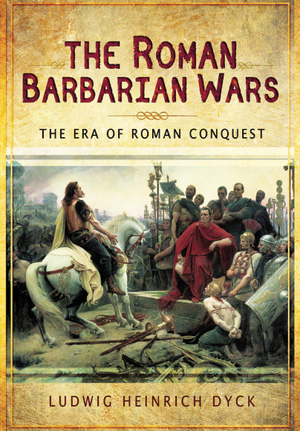 The Roman Barbarian Wars: The Era of Roman Conquest (Ludwig Dyck, Casemate Publishers, Haver-town, PA, 2016, 240 pp., maps, illustrations, notes, bibliography, index, $34.95, hardcover)
The Roman Barbarian Wars: The Era of Roman Conquest (Ludwig Dyck, Casemate Publishers, Haver-town, PA, 2016, 240 pp., maps, illustrations, notes, bibliography, index, $34.95, hardcover)
The story of Rome is often characterized through its struggles against the barbarian tribes of Europe, such as the Gauls, Germans, and Iberians. Although there is much more to Rome’s story, these tales of barbarian conquest stand out due to their drama and ferocity. The so-called barbarians were capable opponents even to the well-organized Romans, belying their actual level of civilization. Rome’s legions did not venture forth without risk, despite the end result being the expansion of its empire.
Each chapter of this book covers a different tribe, personality, or campaign. The author goes into great detail on each topic. His vivid prose makes for a gripping read. The reader can savor the chapters in a stand-alone fashion because of the way they cover different topics. On the whole, however, the book delivers on its promise to give the reader the big picture view of the conflicts between Rome and its barbarian foes.
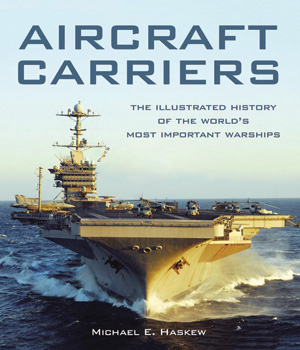 Aircraft Carriers: The Illustrated History of the World’s Most Important Warships (Michael E. Haskew, Zenith Press, Minneapolis, MN, 2016, 239 pp., maps, notes, index, $40.00, hardcover)
Aircraft Carriers: The Illustrated History of the World’s Most Important Warships (Michael E. Haskew, Zenith Press, Minneapolis, MN, 2016, 239 pp., maps, notes, index, $40.00, hardcover)
The aircraft carrier has been the capital ship of the past 75 years. They went through a humble beginning during World War I, when the few in existence carried but a handful of fragile biplanes capable of dropping a few small bombs. It was a beginning, however, and within a generation the aircraft carrier had grown into a major warship in its own right, able to tote dozens of fighters, dive bombers, and torpedo planes and launch them into sprawling sea battles. For the first time fleets fought battles in which the opposing side’s ships never saw each other. The United States took the lead in this new type of warfare, building over 100 carriers during World War II. By the end of that conflict the U.S. Navy had perfected the ability to coordinate large strikes against enemy ships or targets on land.
After the war the aircraft carrier continued its primacy, providing air power wherever it was needed across the globe by those nation fortunate enough to afford them. Korea, Vietnam, Falkland Islands, and the wars in the Middle East have all seen carrier battle groups offshore, projecting combat power inland and dominating the skies. Modern aircraft carriers are virtual floating cities, carrying thousands of sailors and able to stay at sea for extended periods without replenishment. Even the appearance of a carrier battle group is enough to give pause to a would-be opponent.
The history of the aircraft carrier is a big subject and this book is equal to its task. The ships along with their development, tactics, and aircraft are all covered in detail. Significant facets of carrier operations are given specific coverage in well-placed sidebars. If the reader wants to know how a carrier air wing is organized or what the colors of the jerseys worn by the flight deck crew mean, it can be found within this book. Zenith Press is known for its excellent illustrations in such works, and the book contains stunning photographs to accompany the text. The result is a book which is both entertaining to read and pleasing to the eye.
 Through the Valley: My Captivity in Vietnam (William Reeder Jr., Naval Institute Press, Annapolis, MD, 2016, 264 pp., maps, photographs, appendix, notes, index, $29.95, hardcover)
Through the Valley: My Captivity in Vietnam (William Reeder Jr., Naval Institute Press, Annapolis, MD, 2016, 264 pp., maps, photographs, appendix, notes, index, $29.95, hardcover)
William Reeder was an Army aviator in Vietnam. During his first tour he piloted an OV-1 Mohawk airplane, flying classified missions over North Vietnam, Laos, and Cambodia. In 1971 he returned for a second tour of duty, this time as an attack helicopter pilot in an AH-1 Cobra. The Americans were in the process of Vietnamization, preparing to turn the defense of South Vietnam over to its indigenous armed forces. At the time it seemed everything was on track to meet that goal.
Less than a year into his tour Reeder was supporting the Special Forces base at Ben Het near Khe Sanh. During one mission his helicopter was downed, but he survived the crash. Reeder managed to avoid the pursuing enemy for three days but eventually his luck ran out and he was taken prisoner. The North Vietnamese kept him caged for weeks, after which he was marched north along the Ho Chi Minh Trail. During the arduous trek, seven of the 27 prisoners died. Arriving at Hanoi, his ordeal only worsened as he endured additional mistreatment by his captors.
The way that he and his fellow prisoners maintained their dignity and courage under horrendous circumstances is inspiring. The well-written autobiography is a stirring look at the trials of a prisoner of war in North Vietnam.
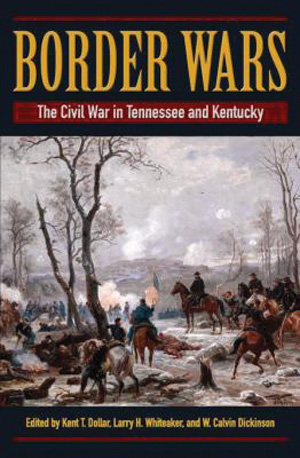 Border Wars: The Civil War in Tennessee and Kentucky (Edited by Kent T. Dollar, Larry H. Whiteaker and W. Calvin Dickson, Kent State University Press, Kent, OH, 2015, 310 pp., maps, illustrations, notes, index, $39.95, hardcover)
Border Wars: The Civil War in Tennessee and Kentucky (Edited by Kent T. Dollar, Larry H. Whiteaker and W. Calvin Dickson, Kent State University Press, Kent, OH, 2015, 310 pp., maps, illustrations, notes, index, $39.95, hardcover)
The states of Kentucky and Tennessee shared much in common but went separate ways with the outbreak of the American Civil War. Tennessee seceded while Kentucky stayed within the Union. These were prosperous states which contained resources both sides needed but which were perhaps more vital to the Confederacy. Control of these regions would also determine whether the rest of the fighting would happen in Northern or Southern territory. It was inevitable the two states would become the scene for heavy fighting. As events unfolded, this fighting would not only occur between the Union and Confederate armies but would draw in local civilians on both sides, causing hard feeling and deep tensions for all involved.
Written as a collection of essays on this often overlooked theater of the war, the book delves into the details of the fighting in the border region offering both accounts of major figures and local stories which always add a fascinating flavor to the overall tale. The authors are all acknowledged experts on their subject with extensive knowledge that is apparent from the first pages of their essays.
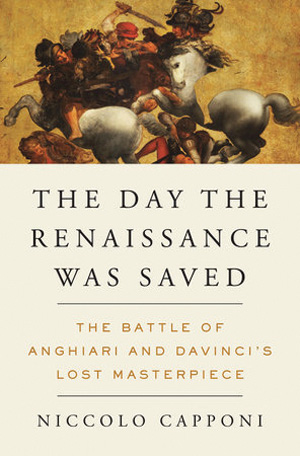 The Day the Renaissance Was Saved: The Battle of Anghiari and Da Vinci’s Lost Masterpiece (Niccolo Capponi, Melville House, Brooklyn, NY, 2016, 298 pp., maps, illustrations, notes, bibliography, index, $26.95, hardcover)
The Day the Renaissance Was Saved: The Battle of Anghiari and Da Vinci’s Lost Masterpiece (Niccolo Capponi, Melville House, Brooklyn, NY, 2016, 298 pp., maps, illustrations, notes, bibliography, index, $26.95, hardcover)
The late afternoon sun beat down on two Italian armies on June 29, 1440. The army of Milan had been unstoppable up to this point, but now it faced the combined forces of Venice, Florence, and the Papal States near a bridge at the town of Anghiari. The battle’s outcome helped bring the infamous Medici family to power at the dawn of the Renaissance. The battle was considered so significant at the time that no less an artist than Leonardo Da Vinci created a painting honoring it. All trace of this painting was subsequently lost for 400 years.
The author is both a scholar and descendant of Niccolo Machiavelli. He has created a fascinating account of a turbulent period in European history. Not only are the key figures covered in detail, but the tactics and strategies of the mercenary armies of the day also are included. Even the experiences of the participating soldiers are revealed.
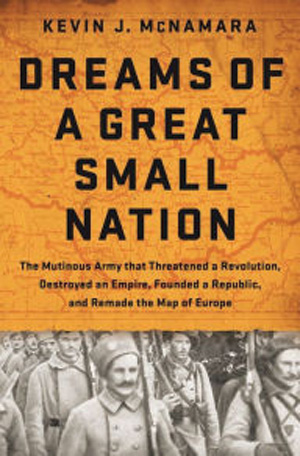 Dreams of a Great Small Nation: The Mutinous Army that Threatened a Revolution, Destroyed an Empire, Founded a Republic and Remade the Map of Europe (Kevin J. McNamara, PublicAffairs Books, New York, 2016, 416 pp., notes, bibliography, index, $28.99, hardcover)
Dreams of a Great Small Nation: The Mutinous Army that Threatened a Revolution, Destroyed an Empire, Founded a Republic and Remade the Map of Europe (Kevin J. McNamara, PublicAffairs Books, New York, 2016, 416 pp., notes, bibliography, index, $28.99, hardcover)
During World War I, the Eastern Front collapsed into chaos after the Russian Revolution began in 1917. The Austro-Hungarian Empire was collapsing during the same period, leaving millions of people at the mercy of forces beyond their control. The Czech-Slovak Legion was one such group. Many of these soldiers were former prisoners of war who were offered the chance to fight against their former leaders in return for their nation’s freedom. They fought for the Allies until Russia dropped out of the war; after that occurred they were cast adrift in the middle of another country’s civil war. Rather that fall apart, the legion began fighting its way back home.
The amazing story of this brave group of men is little known in the Western World, whose interest in the Great War often ends at the German border. It is a tale of desperation, waning empires and political machinations, well-told in a detailed account. The author was awarded special grants to gather his research and translate it for the creation of this book and the thoroughness of his effort shows through in the quality of the work.
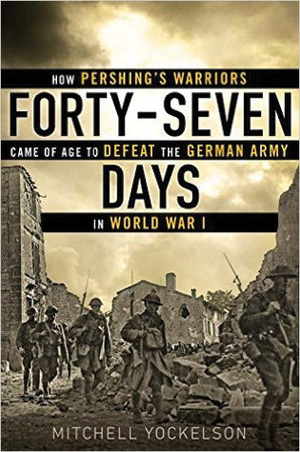 Forty-Seven Days: How Pershing’s Warriors Came of Age to Defeat the German Army in World War I (Mitchell Yockelson, NAL Caliber, New York, 2016, 390 pp., maps, photographs, notes, bibliography, index, $28.00, hardcover)
Forty-Seven Days: How Pershing’s Warriors Came of Age to Defeat the German Army in World War I (Mitchell Yockelson, NAL Caliber, New York, 2016, 390 pp., maps, photographs, notes, bibliography, index, $28.00, hardcover)
When the U.S. Army began arriving in Europe in 1917, their allies did not expect much from them. The British and French saw the Yanks as inexperienced, immature, and ill-trained. They weren’t completely wrong, but they underestimated the American’s ability to learn, improvise and bring their energy and courage to the battlefield. They also wanted to distribute U.S. troops out among their own armies as penny-packet reinforcements. The American commander, General John Pershing refused to let that happen, realizing it would diminish his country’s contribution to the war effort.
His own efforts paid off when the U.S. First Army fought in the battle of the Meuse-Argonne. After 47 days and 126,000 casualties the Americans emerged triumphant. This new book documents the way in which this army rose to the occasion through vignettes on many of the soldiers who served in it, both famous and unknown. Their stories are woven seamlessly into the greater narrative of the war. This work provides the reader a very thorough and entertaining account of the U.S. Army’s first true foray onto the world stage.
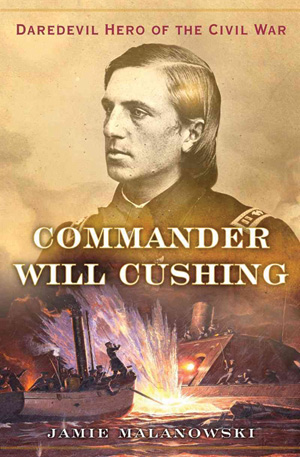 Commander Will Cushing: Daredevil Hero of the Civil War (Jamie Malanowski, W.W. Norton, New York, 2016, 304 pp., illustrations, notes, bibliography, index, $17.95, softcover)
Commander Will Cushing: Daredevil Hero of the Civil War (Jamie Malanowski, W.W. Norton, New York, 2016, 304 pp., illustrations, notes, bibliography, index, $17.95, softcover)
William Barker Cushing was one of the American Civil War’s most daring heroes and a man few people have heard of today. He had a distinguished naval career despite the fact he was expelled from the Naval Academy for having a “talent for buffoonery.” When the war broke out, however, he successfully pled for a second chance and took it seriously indeed. As a 21 year old lieutenant he led an expedition against the Confederate ironclad CSS Albemarle. During this mission he exploded a torpedo against the enemy ship’s hull, sinking it at great risk to himself. Surviving this exploit, Cushing went on to command warships and hold other important posts until his death in 1874.
This interesting biography delves into Cushing’s life in an engaging and fluid way, keeping the reader’s interest throughout. He seems almost a fictional character due to his larger than life spirit and willpower; the author successfully brings these traits to the fore with vivid descriptions and a flair for clear prose. The result is a close look at a man once called “Lincoln’s Commando.”
 Voices from the Front: An Oral History of the Great War (Peter Hart, Oxford University Press, Oxford, UK, 2016, 440 pp., notes, index, $34.95, hardcover)
Voices from the Front: An Oral History of the Great War (Peter Hart, Oxford University Press, Oxford, UK, 2016, 440 pp., notes, index, $34.95, hardcover)
Many years ago, the author was a young historian at the United Kingdom’s Imperial War Museum. He conducted interviews with almost 200 of his country’s surviving World War I veterans. This was the last chance to actually record the experiences of the war’s participants before time took its inevitable toll. The results were later used to create this new work, a blend of these veteran testimonies and other accounts as well. The reader can build a picture of the war through the word of those who were there; life in the trenches, training and actions abroad from Western Europe to Palestine, Salonika and Africa. Attention is paid not only to how the men kept their wits through all this hellish war could throw at them, but also how experienced civilian life after the conflict ended and they returned home. The centennial of the war is still ongoing; books such as this allow long-departed voices to ring out once again in their pages.
Short Bursts
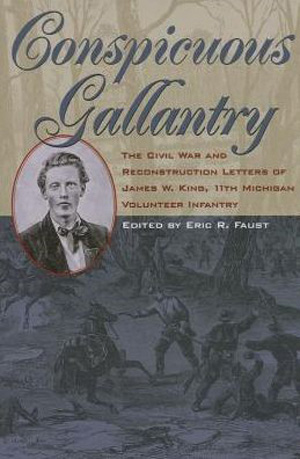 Conspicuous Gallantry: The Civil War and Reconstruction Letters of James W. King, 11th Michigan Volunteer Infantry (Edited by Eric R. Faust, Kent State University Press, $45.00, hardcover) The author served in the western theater battles of Stones River, Chickamauga. and Missionary Ridge along with postwar reconstruction duty. This book collects his letters into a narrative of his experiences.
Conspicuous Gallantry: The Civil War and Reconstruction Letters of James W. King, 11th Michigan Volunteer Infantry (Edited by Eric R. Faust, Kent State University Press, $45.00, hardcover) The author served in the western theater battles of Stones River, Chickamauga. and Missionary Ridge along with postwar reconstruction duty. This book collects his letters into a narrative of his experiences.
Zinky Boys: Soviet Voices from the Afghanistan War (Svetlana Alexievich, W.W. Norton, 2016, $15.95, softcover) A look at the Afghanistan War through the eyes of the soldiers who fought there and the families who waited at home.
Elegy: The First Day on the Somme (Andrew Roberts, Head of Zeus Ltd, 2015, $29.95, hardcover) The first day of the Battle of the Somme in 1916 produced 69,000 casualties, of which approximately 57,000 were from the British Fourth Army. This book covers that horrific first day from a variety of angles.
Goose Green 1982 (Gregory Fremont-Barnes, Dundurn Books, 2016, $14.99, softcover) Goose Green was the first major battle of the Falklands War. A force of British paratroopers doggedly fought their way to victory against dug-in Argentine soldiers.
Napoleon: A Concise Biography (David A. Bell, Oxford University Press, 2016, $18.95, hardcover) This book summarizes Napoleon’s singular career and places his life in context with the French Revolution and the world he lived in.
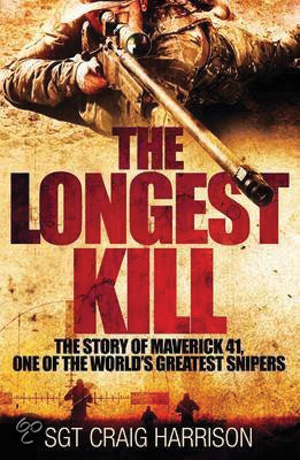 The Longest Kill: The Story of Maverick 41, One of the World’s Greatest Snipers (Sgt. Craig Harrison, St. Martin’s Press, 2016, $26.99, hardcover) The author holds the record for the longest confirmed sniper kill at 2,475 meters. This is the story of his service and the aftermath.
The Longest Kill: The Story of Maverick 41, One of the World’s Greatest Snipers (Sgt. Craig Harrison, St. Martin’s Press, 2016, $26.99, hardcover) The author holds the record for the longest confirmed sniper kill at 2,475 meters. This is the story of his service and the aftermath.
Atlanta 1864: Sherman Marches South (James Donnell, Osprey Publishing, 2016, $24.00, softcover) Sherman’s march through Georgia was a dagger in the heart of the Confederacy. This book covers the entire campaign.
M48 Patton vs Centurion: Indo-Pakistani War 1965 (David R. Higgins, Osprey Publishing, 2016, $18.95, softcover) The 1965 war between India and Pakistan saw some of the largest tank battles since World War II. The Indians used the British Centurion tank, and the Pakistanis relied on the U.S.-built M48 Patton Tank.
An Untaken Road: Strategy, Technology and the Hidden History of America’s Mobile ICBMs (Steven A. Pomeroy, Naval Institute Press, 2016, $44.95, hardcover) Plans to field mobile ballistic missiles went on for decades, but they never came to fruition. Even so, these plans shaped American strategy and policy.
Heroes Beneath the Waves: Submarine Stories of the Twentieth Century (Mary Nida Smith, Skyhorse Publishing, 2016, $14.99, softcover) A collection of American submariner’s military experiences. Each tells the tale of a different boat during World War II through the Cold War.
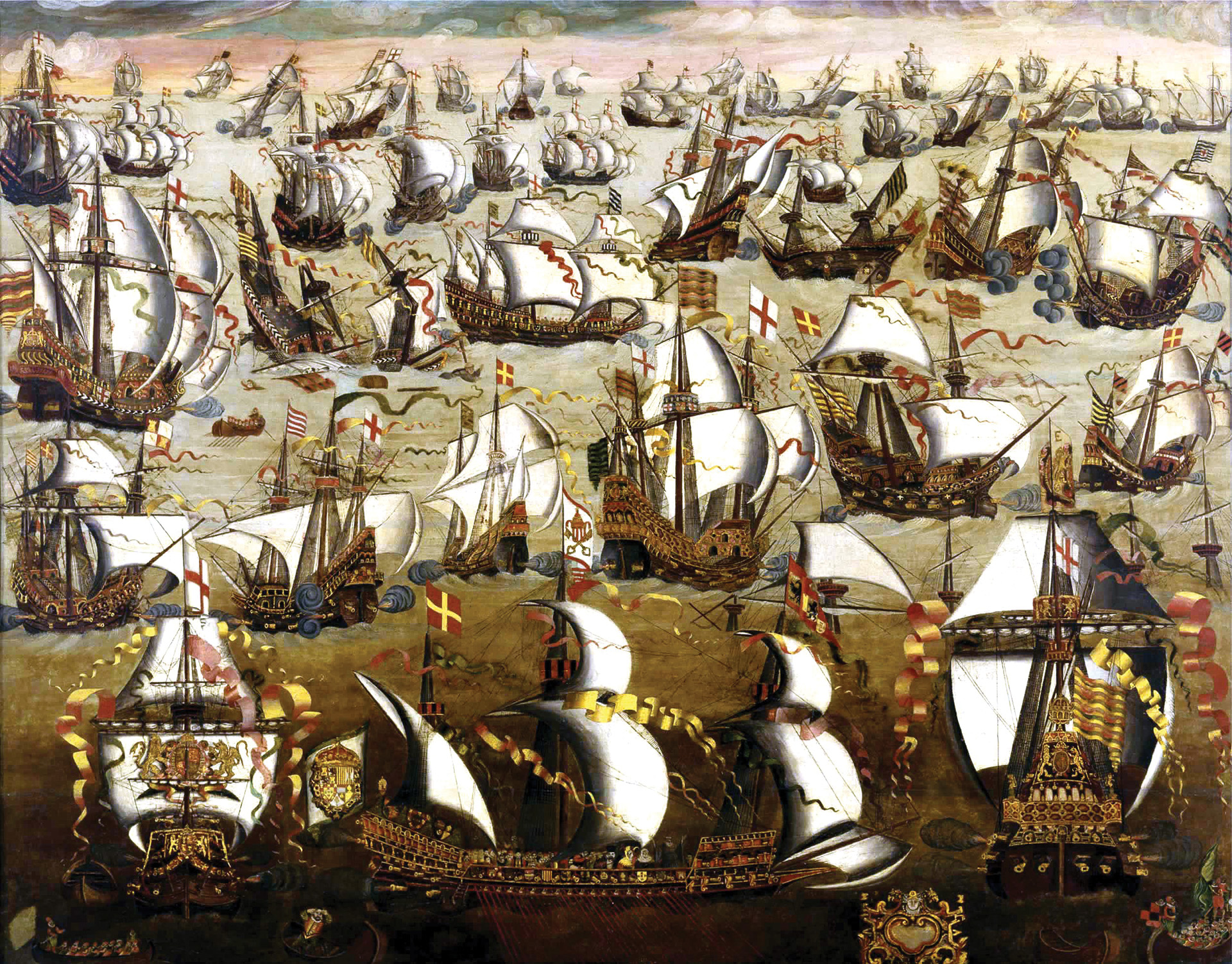
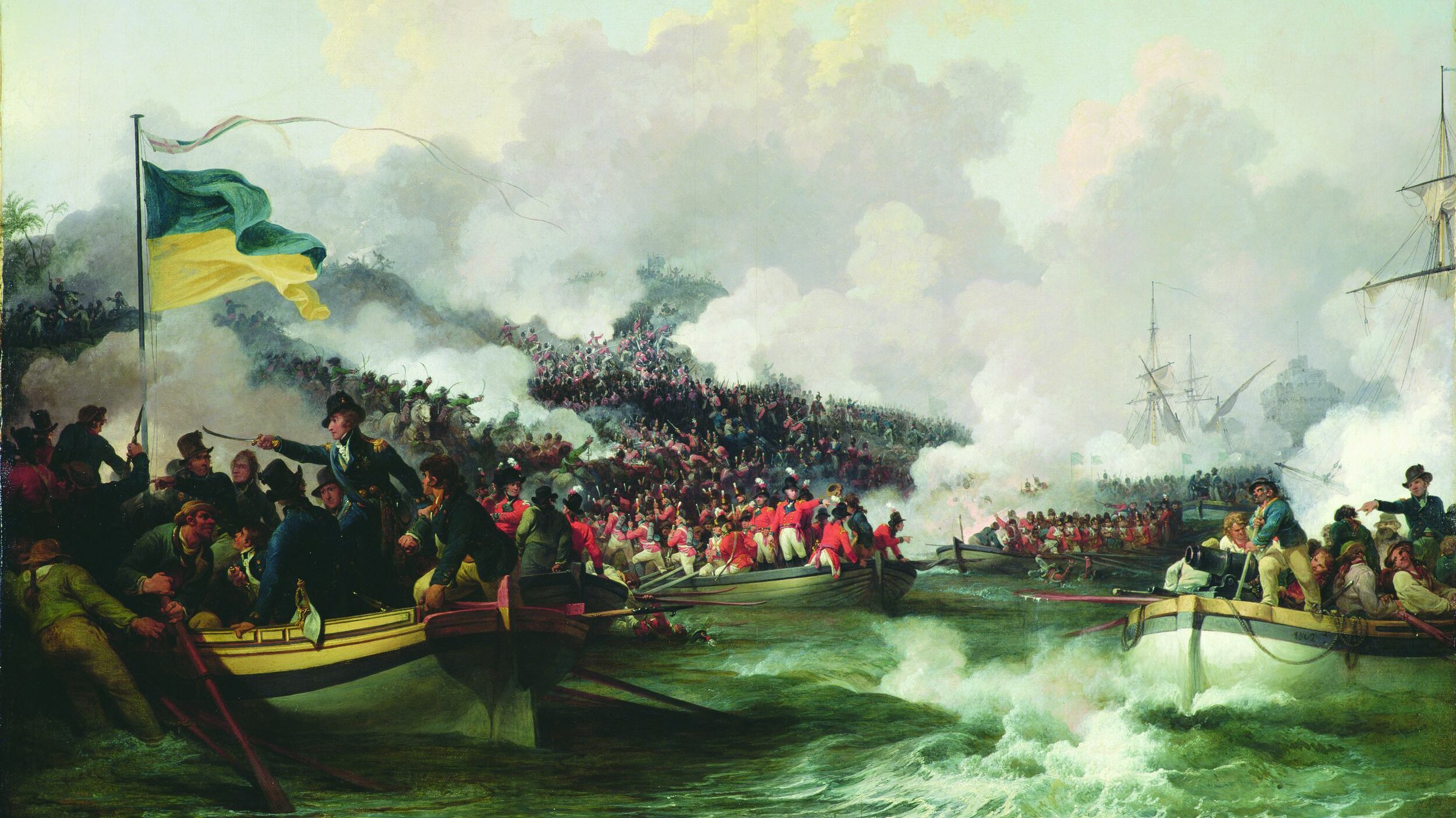
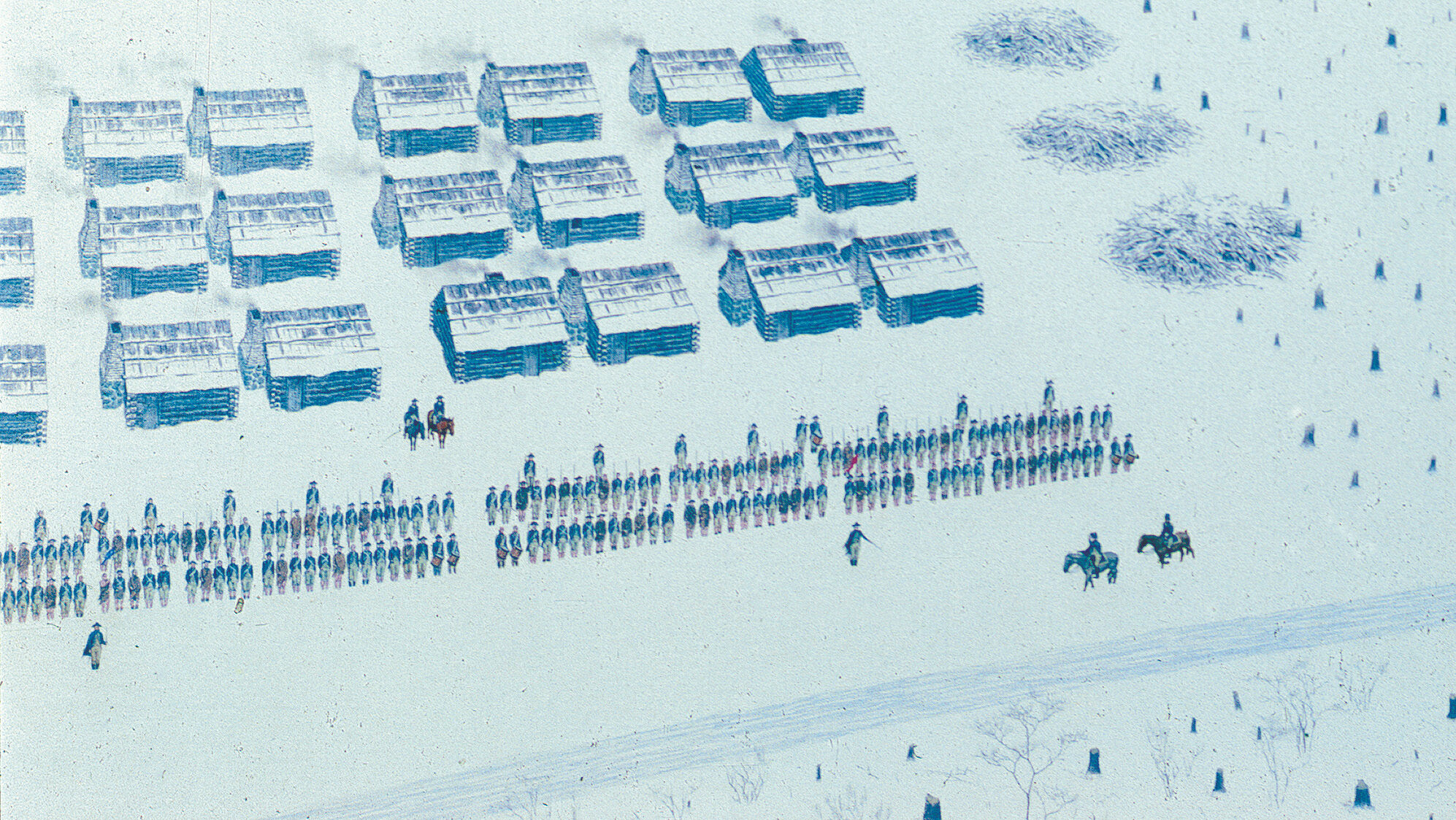
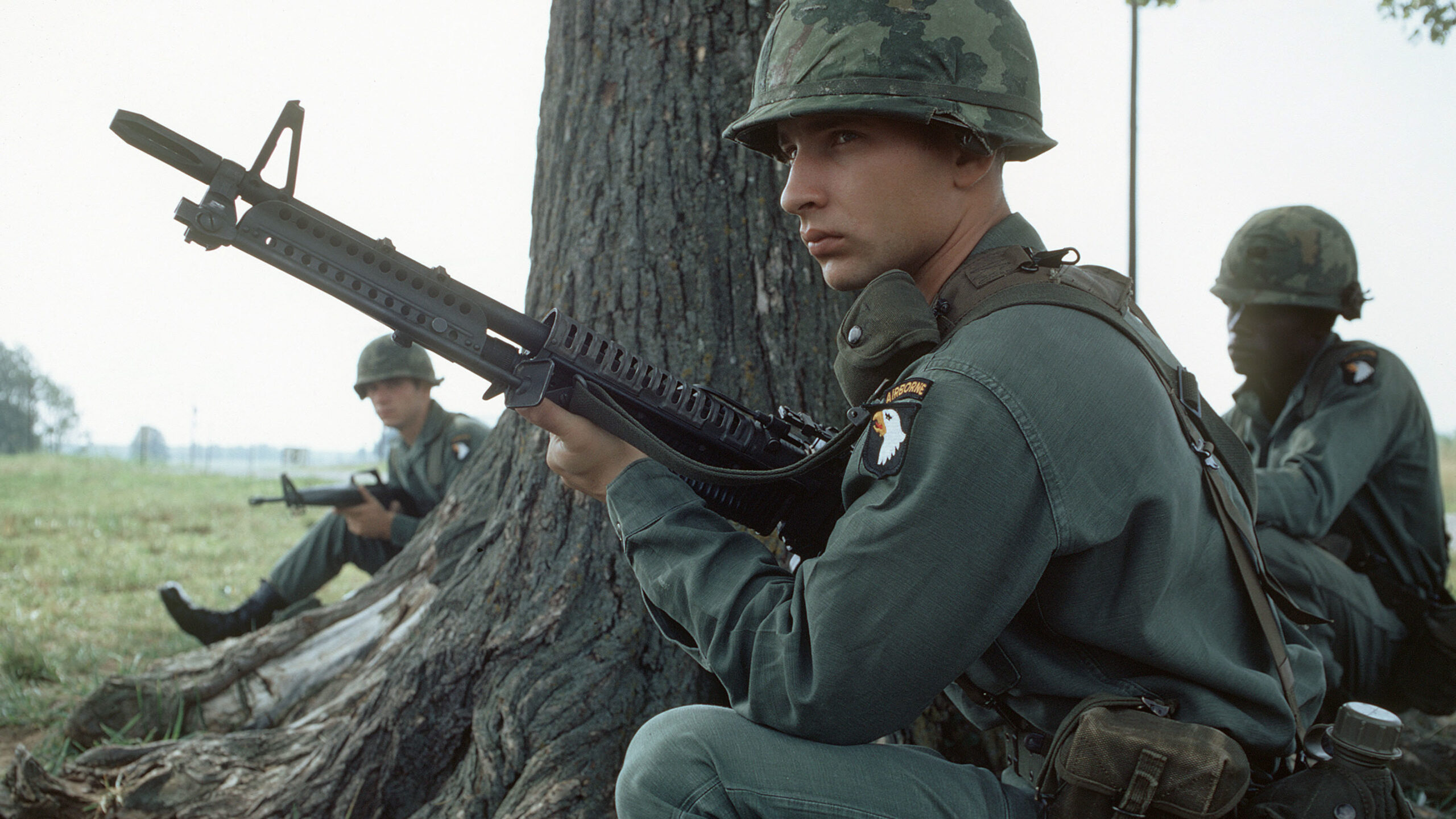
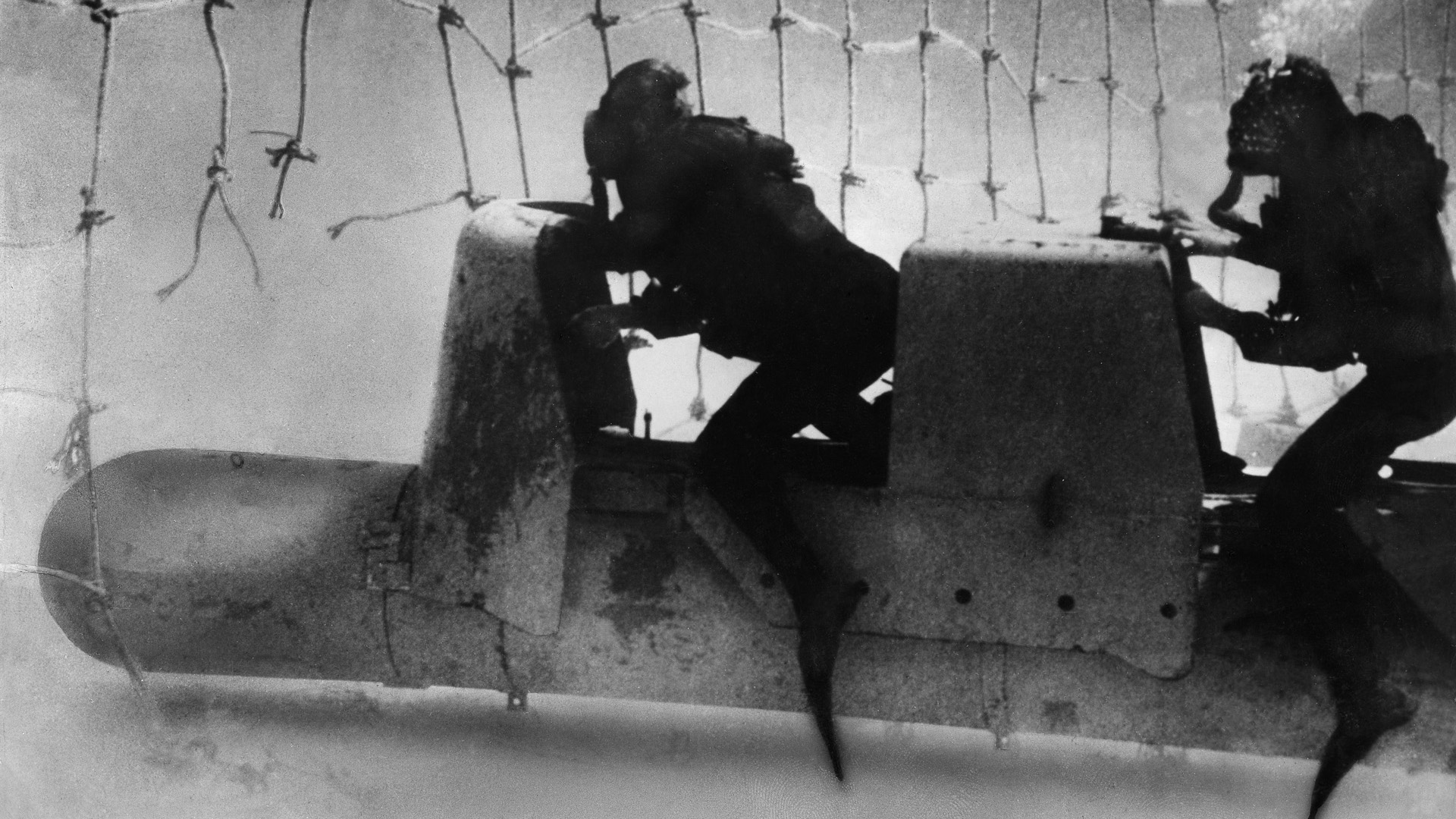

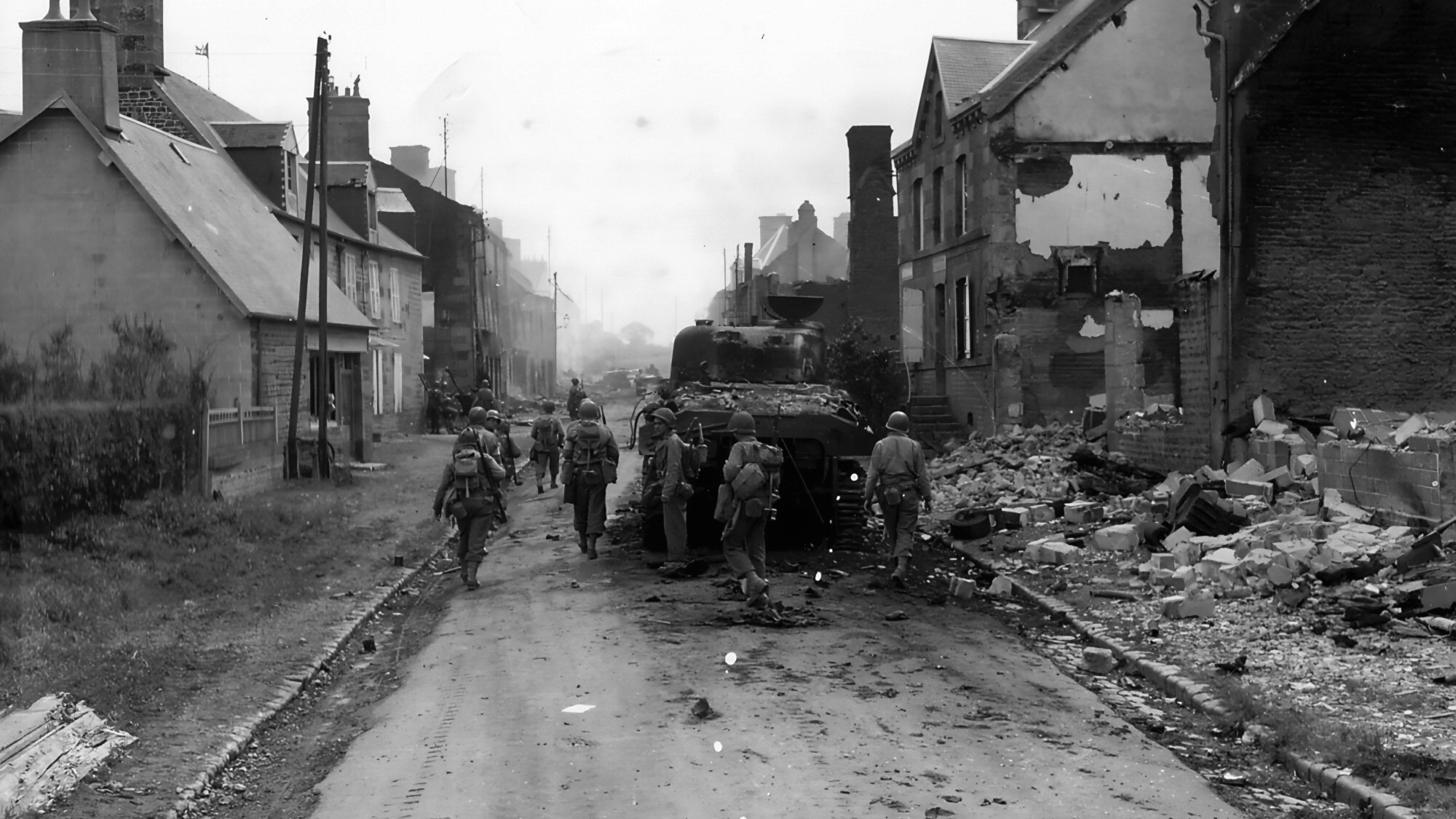
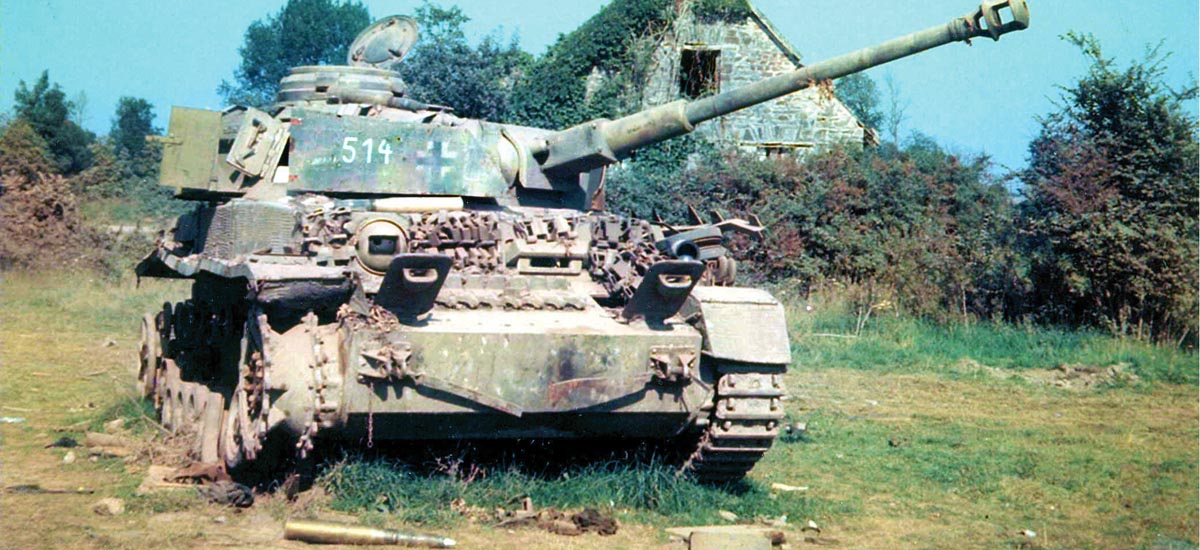
Join The Conversation
Comments